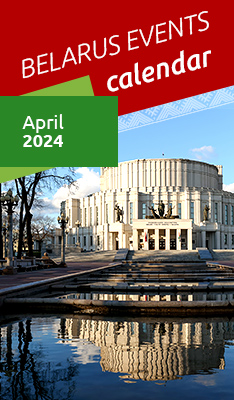Events
Belarus 2030 strategy influenced by long-term forecasts of Russia’s, EU’s development
MINSK, 15 October (BelTA) – Long-term forecasts of the development of Russia and the European Union have been taken into account during the development of the national strategy for Belarus’ sustainable social and economic development till 2030, BelTA learned from Alexander Chervyakov, Director of the Economy Research Institute of the Belarusian Economy Ministry, at the session of the scientific advisory council for economy development under the Presidium of the Council of the Republic of the National Assembly of Belarus.
Work is now in progress to put together a strategy that will guide Belarus’ development till 2030. The strategy is supposed to determine priorities and avenues of the country’s development for 15 years as part of a triad — man, economy, ecology. “The developers of the strategy took into account common international trends, the reshaping of the world order, climate changes, and the depletion of natural resources across the globe. We have taken into account long-term forecasts regarding the development of Belarus’ main trade partners — Russia and the European Union,” noted Alexander Chervyakov.
According to the official, internal problems and conditions, in which Belarus develops and will develop, have been taken into account. Those include the comparatively high energy intensity of the gross domestic product, which is nearly twice as high as that in Poland, Lithuania, and Latvia, the high import ratio and the low science ratio as well as the low competitive ability caused by the inability of economic operators to follow basic economic laws.
“In these conditions the main risks that our country may face in the long term include the slow pace of the transformation of the economy and the risk that its high-cost structure will stay in place. There is also quite a high risk of our technologies falling behind the new wave of innovations, which is gaining force now. Apart from that, economy growth remains comparatively dependent on imports and changes of prices for energy and raw materials, which necessitate the development of a strategy for their effective usage,” said Alexander Chervyakov.
The possible risks also include international discrimination measures that are emerging and that Belarus has to fight and work out mechanisms to negate such measures. “They may be related not only to political matters but also technological ones. As a result, they may restrict Belarus’ access to new technologies and know-how,” explained the Director of the Economy Research Institute of the Belarusian Economy Ministry.
In his words, the group of social risks includes the loss of labor potential, the increase in demographic pressure, the withdrawal of qualified personnel, the problem of depleting natural resources, the degradation of soil and natural complexes, climate changes, and the depletion of the ozone layer.
In turn, Deputy Chairman of the Council of the Republic of the National Assembly of Belarus Anatoly Rusetsky remarked that the development of the strategy was important because many programs to develop various branches of the national economy are nearly finished. “We should clearly understand how the country should act and develop from now. At the same time the strategy has to propose only the ideas that we are capable of implementing,” stressed Anatoly Rusetsky.
| Su | Mo | Tu | We | Th | Fr | Sa |
|---|---|---|---|---|---|---|







 print version
print version make home page
make home page add to bookmarks
add to bookmarks

